Since
1959 James
Bond 007 Museum Sweden, Nybro.
The 007 museum 1000 sq.m.
world`s only James Bond 007 Museum
Emmabodav. 20, 38245 Nybro
![]()
![]()
![]()
![]()
![]()
![]()
![]()
|
Since
1959 James
Bond 007 Museum Sweden, Nybro. |
Contact:
007museum@telia.com
![]() Phone+4648112960
Open Daily
10-17 Sat 10-14 Media
To do and see
Buy/Köp info
Links
Phone+4648112960
Open Daily
10-17 Sat 10-14 Media
To do and see
Buy/Köp info
Links
Glastron GT-150 1972, 26 boats were used in filming of James Bond’s “Live and Let Die” 1973
| See Glastron GT-150 in The James Bond 007 Museum. Glastron GT-150 26 boats were used in filming of James Bond’s “Live and Let Die” 1973, and 17 was destroyed. from Glastron in Austin, Texas. |
glastron_gt150.mp4 See Glastron 150-GT in The James Bond 007 Museum. Glastron GT-150 1972 26 boats were used in filming of James Bond’s “Live and Let Die” 1973. |

| Glastron literature identifies
the Live and Let Die boat as a GT150 with a Evinrude Starflite 135hp engine.The year was 1973. Interesting to note is that the '73 catalog lists the max hp of the GT150 at 90hp. The GT150 is best distinguished from the CV-16 and GT160 by the transoms. The CV-16& GT150 have a spoiler type transom while the GT150 has the opposite slant at the top of the transom. In the famous picture with the cop pointing the gun, you can see the only modifications to the hull: two small black rails that kept the boat level side to side on the ramp. The only other main modification was the central mounting of the steering wheel and a single centrally mounted seat for balance. The jump was performed over 100 times to get everything right before the actual take. Glastron built and sold 26 boats to the film company for the film. 1. 26 - 1972 Glastron boats were used in filming of
James Bond’s “Live and Let Die” and came direct from Glastron in
Austin, Texas. |
See Glastron GT-150 in The James Bond 007 Museum. Glastron GT150 1972, 26 boats were used in filming of James Bond’s “Live and Let Die” 1973 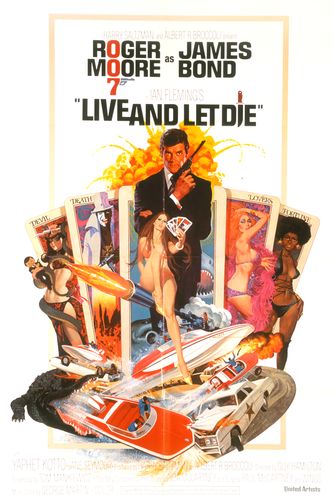 Live and Let Die film poster Live And Let Die poster James Bond (Roger Moore)
|
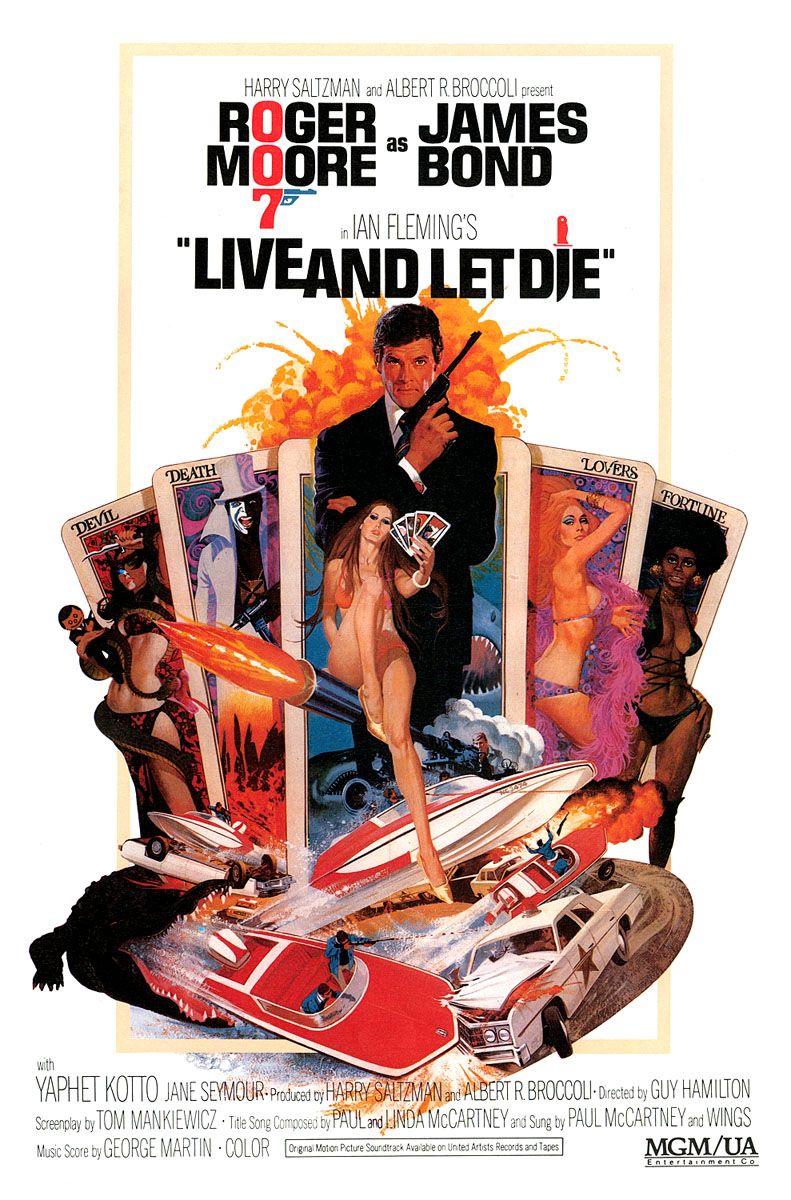 |
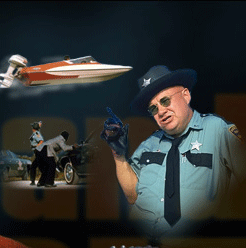 
|
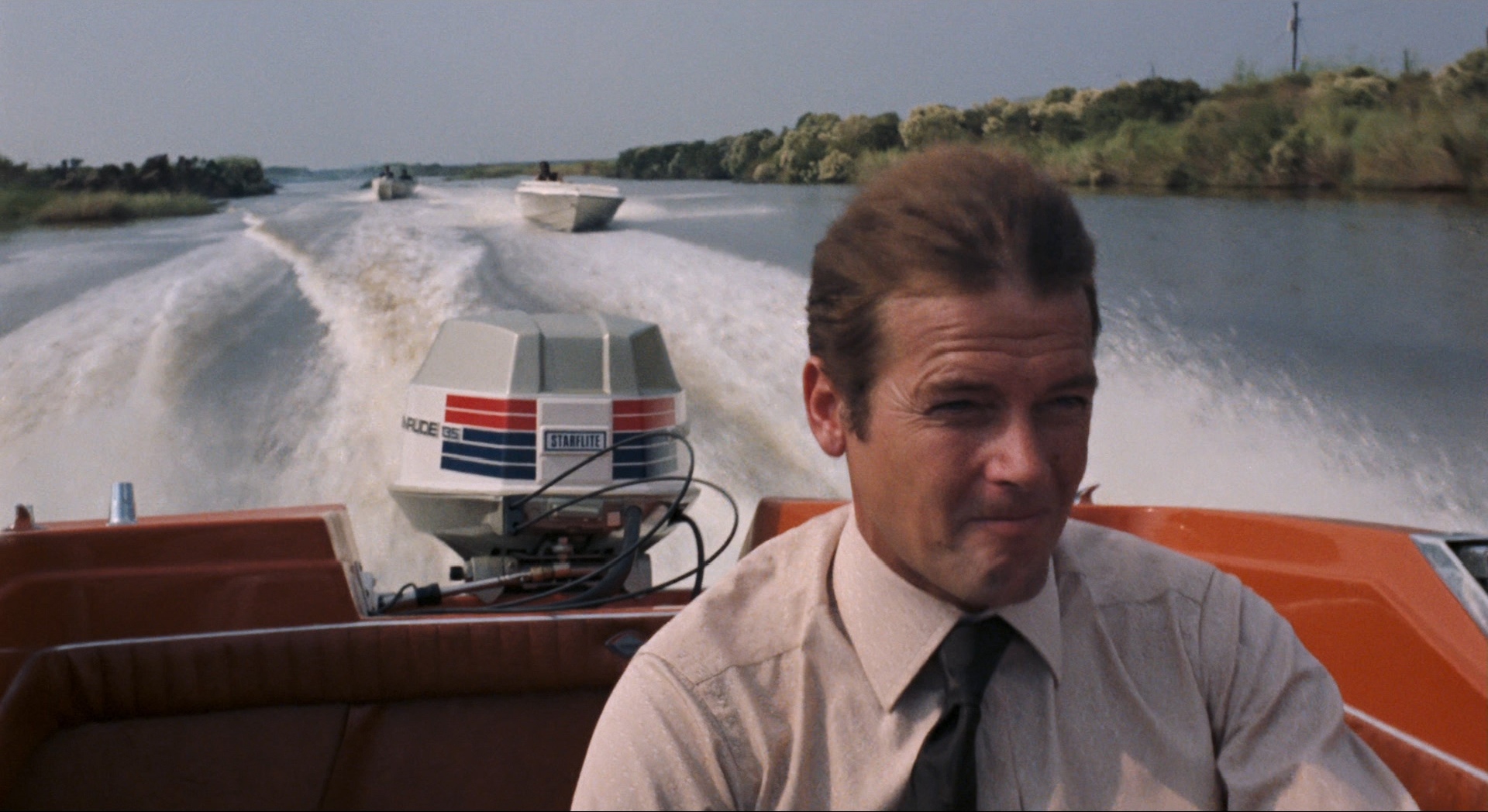
James Bond (Roger Moore) breaks through a road block
setup by Louisiana State Police and continues being chased throughout the
Louisiana bayou by Dr. Kananga's henchmen.
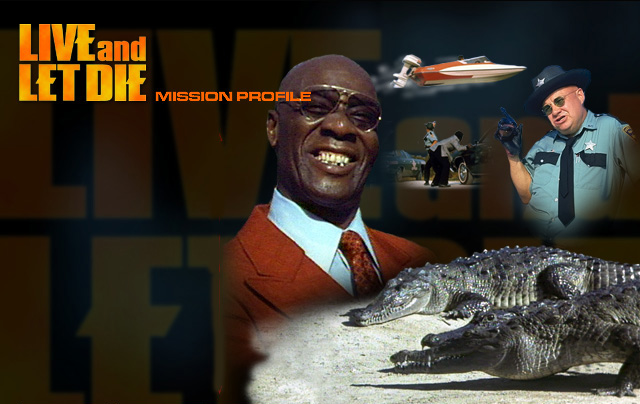 Tee Hee and Sheriff St. Pepper |
 |
Sherrif JW PepperPlayed by: Clifton JamesDescription: JW Pepper is a bumbling Louisiana lawman who is a caricature of the tough-talking Southern peace officer. Introduced as an outraged policeman, Pepper can't seem to halt the motorboat chase between Bond and Kananga's henchmen
|
James Bond's Glastron 1978 CV23HT "Moonraker" 1979
| James Bond's Glastron
1978 CV23HT
"Moonraker" 1979 Glastron 1978 CV23HT silver. The boat that James Bond drives in the 1979 movie "Moonraker" (above) is a 1978 or 1979 CV23HT "HT" is for hardtop. The '78 and '79 models sold to the general public came in either metalflake blue or metalflake bronze. Special CV23HTs were produced for the movie in a silver gray metalflake. CV23s were introduced in 1976, but the hardtop model was new for 1978. It would return only for 1979, probably because of the release of the new hardtop Scimitar. The CV23 non-hardtop would continue a successful run all the way through at least 1988. The boat in the movie is sometimes mistaken for the Scimitar (see pic at far bottom for comparison) ; but upon closer inspection it becomes clear that this is the CV23HT. The most obvious differences are the large hatch in front of the windshield and the high bowrail encircling the front half of the boat. Also, the CV23HT has a 2 piece (both flat)windshield and the Scimitar has a single piece curved windshield |
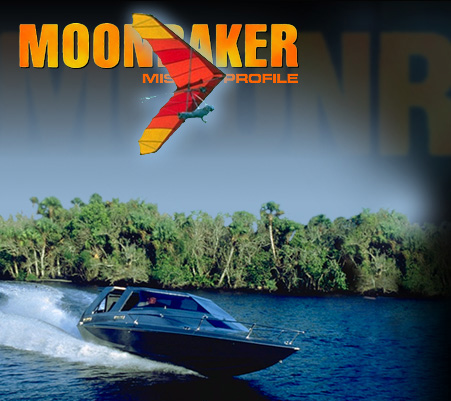 James Bond's Glastron 1978 CV23HT "Moonraker" 1979 http://www.classicglastron.com/gl-moonraker.html |
|
Copyright © 1959-2017 www.007Museum.com
All Rights Reserved 



James Bond 007 Museum Nybro, Sweden. www.007museum.com Contact: 007museum@telia.com tel. +46-481-12960 Open Daily 10.00 - 17.00 (lunch 13-14) Sat 10.00-14.00 Adress: James Bond 007 Museum, Emmabodav. 20 382 45 Nybro, Sweden 0481-12960 |
James Bond
Materials© 1962 - 2017 United Artists Corporation and Danjaq, LLC. 007 Gun
Logo© 1962 United Artists Corporation and Danjaq, LLC. 007 Gun Logo, Iris
Logo,
JAMES BOND and all other James Bond related trademarks - Danjaq, LLC. All
Rights Reserved. Copyright